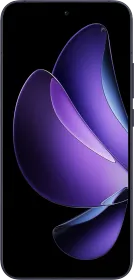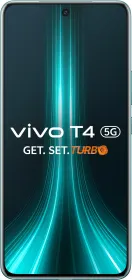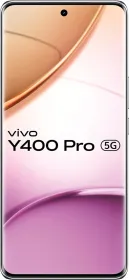In a market where smartphone brands focus heavily on camera megapixels, fast charging speeds, and flashy designs, the basics often get overlooked. Features like strong network reception, durability, and long-term reliability—things that actually impact daily use—are rarely prioritized. But OPPO is taking a different route with the F29 Pro.
It features IP69-rated durability, claims a 300% network boost, and uses AI optimizations to deliver a phone that won’t just perform well on paper but will actually hold up in real-life scenarios. But does it deliver?
On paper, it’s got a MediaTek Dimensity 7300 Energy chip, a 6.7-inch quad-curved AMOLED, a decent-ish 50 MP camera, and a lightweight build despite its beefy 6,000 mAh battery. The OPPO F29 Pro isn’t breaking any records when it comes to specs, so let’s take a look at the actual usage experience in this review.
OPPO F29 Pro Price & Availability
The OPPO F29 Pro comes in two colors—Marble White and Granite Black—both with a textured, mineral-inspired finish. You can snag it on Amazon, the OPPO Store, or at physical retailers. Here’s the pricing breakdown:
- 8GB + 128GB: ₹27,999
- 8GB + 256GB: ₹29,999
- 12GB + 256GB: ₹31,999
OPPO F29 Pro Review: Pros and Cons
Pros
- IP66/68/69 and 18-liquid resistance
- Big, vibrant quad-curved AMOLED screen
- Solid battery life
- Lightweight for its size at 180g
- 300% network boost holds up in weak signal areas
- Handy AI features for photos and productivity
- Great software
Cons
- Low-light camera performance is poor
- Bloatware and ads
- Video performance needs work
OPPO F29 Pro Specifications
- Display: 6.7-inch AMOLED, Quad-Curved, 120 Hz, 1200 Nits peak, FHD+ (2412 x 1080), 394 PPI, 93.5% screen-to-body ratio
- SoC: MediaTek Dimensity 7300 Energy (4nm)
- RAM: 8 GB / 12 GB LPDDR4X
- Storage: 128 GB / 256 GB UFS 3.1
- Main Camera: 50 MP OV50D40, 1/2.88-inch, f/1.8, OIS, 4K30
- Depth Camera: 2 MP Monochrome
- Front Camera: 16 MP IMX480, 1/2.6-inch, f/2.4
- Speakers: Stereo with 300% Ultra Volume Mode
- Battery and Charging: 6,000 mAh, 80W SUPERVOOC, 13.5W PD
- IP Rating: IP66 + IP68 + IP69
- Connectivity: 5G, Wi-Fi 6, Bluetooth 5.4, USB 2.0
- Biometrics: In-display optical fingerprint, 2D face unlock
- Weight and Dimensions: 180g / 161.50 x 74.85 x 7.55 mm
- Build: High-Molecular Fiberglass back, Corning Gorilla Glass Victus 2 front
OPPO F29 Pro Review: Unboxing

Opening the OPPO F29 Pro box is pretty standard fare. You’ve got the phone itself, an 80W SUPERVOOC charger, a USB-A to-C cable, a SIM ejector tool, and the usual paperwork.
There’s a clear TPU case included, which is a bit funny for a phone that’s supposed to be rugged, but it’s a nice extra. Plus, a pre-applied screen protector is already on there, so you’re good to go from the jump.
OPPO F29 Pro Review: Design and Build

The OPPO F29 Pro has a distinct look—I’ve been testing the Granite Black variant, and it’s got this neat, frosty glow. The “High-Molecular Fiberglass” back has a slight texture that feels natural, not plasticky. However, it’s worth nothing that fiberglass is a type of fiber-reinforced plastic. At 7.55 mm thick and 180g, it’s surprisingly light for something packing a 6,000 mAh battery.
The quad-curved design is a standout. It’s comfortable to grip, with smooth edges that don’t dig in, whether you’re scrolling or gaming. The frame’s made of AMO4 aluminum alloy—some high-strength stuff from aerospace that’s 10% tougher than the last gen—and there’s sponge cushioning inside to take the sting out of drops.

On the back is a compact camera module with a 50 MP main lens and a 2 MP monochrome sensor, framed by a raised ring. Up front, Corning Gorilla Glass Victus 2 handles the screen protection.

Durability is one of the defining aspects of the OPPO F29 Pro. With IP66, IP68, and IP69 certifications, it is one of the most rugged smartphones available in its category. As per OPPO’s claims, it can withstand dust, full water immersion up to 1.5 meters for 30 minutes, and even high-pressure water jets, a level of protection usually reserved for industrial devices.
In addition to its water and dust resistance, the F29 Pro has undergone 14 Military Standard (MIL-STD) durability tests, proving its ability to handle extreme temperatures, humidity, and impact. OPPO has also tested the phone against 18 different liquids, including coffee, juice, beer, detergent, and muddy water. However, there is no warranty if you damage your phone.

Buttons are on the right—power and volume, nice and clicky—and the bottom’s got your USB-C 2.0 port, speaker, and SIM tray. The downside is that the back picks up smudges pretty easily if your hands are wet or oily, but it’s not a big deal.
Outdoor Mode tweaks performance and volume for rider apps like Zomato, and Glove Mode works well. There’s also support for use with wet hands, which works fine but it’s not flawless.
OPPO F29 Pro Review: Display

The 6.7-inch quad-curved AMOLED is a strong point. The FHD+ resolution (2412 x 1080) keeps things sharp at 394 PPI, and the 120 Hz refresh rate makes scrolling smooth. It hits 1200 Nits peak brightness, so it’s usable outdoors—I checked maps in bright sun, no squinting is needed but definitely could be better.
The OPPO F29 Pro’s display includes five eye-protection features, with 2160 Hz PWM dimming reducing flicker in low-light conditions—particularly useful for nighttime viewing. Colors are vibrant yet balanced, though the default setting leans slightly saturated. For those who prefer a more neutral look, a Natural mode is available.

The curved edges add to the premium aesthetic, but they do occasionally catch glare at certain angles. While the overall display quality is solid for its price range, the bezels are quite noticeably thicker than what you’ll find on flat-display phones in this segment.
OPPO F29 Pro Review: Speakers and Haptics

The stereo speakers on the OPPO F29 Pro deliver sufficient loudness, especially with 300% Ultra Volume Mode enabled. In a noisy environment, audio remains clear, with sharp highs and acceptable mids, though bass response is lacking, which is expected in this segment.
Haptic feedback isn’t good. It’s the kind of haptic feedback that you hear more than you feel. For everyday use though, both the speakers and haptics perform adequately.
OPPO F29 Pro Review: Software

The OPPO F29 Pro runs ColorOS 15 on Android 15, offering a smooth and responsive UI with fast animations and a clean layout. OPPO promises 2 years of OS updates and 3 years of security patches, which is at least one year less than what other competitors offer.
Visually, the software includes blur effects in the control center, adding a refined touch, but advanced textures are missing, and Flux themes are very limited compared to what OPPO offers on other devices.

There’s also a significant amount of bloatware, including both first-party OPPO apps and third-party pre-installed applications, many of which cannot be uninstalled. While this doesn’t affect performance directly, it does take up storage and may require manual cleanup.
AI features play a big role in the software experience. AI Summary condenses long articles, Screen Translator allows quick language conversion, and AI Writer helps refine emails and notes. Circle to Search is also available, and Google Gemini is built-in.


In the camera app, AI LivePhoto captures 1.5 seconds before and after each shot, and AI Clarity Enhancer sharpens zoomed-in details. AI Unblur improves blurry images, AI Reflection Remover reduces glare from glass surfaces, and AI Eraser 2.0 allows unwanted objects to be removed with a tap.

Another major addition is AI Studio, which lets users create AI-generated portraits from existing photos. With various artistic styles to choose from, it provides a fun and creative way to generate unique profile pictures or digital avatars.

Overall, the software is fluid and feature-rich, but bloatware and limited theme customization hold it back slightly. It’s a well-optimized UI loaded with AI features, but users who prefer a cleaner, more customizable experience might find these drawbacks noticeable.
OPPO F29 Pro Review: Biometrics

The optical in-display fingerprint sensor on the OPPO F29 Pro is fast and reliable, unlocking the device with minimal delay. The positioning is a bit uncomfortable—I find it slightly lower than ideal.
Face unlock is also available, utilizing the front camera for authentication. It works quickly in good lighting conditions, but since it relies solely on 2D recognition, it is less secure than the fingerprint scanner. For casual use, however, it performs well with no major issues.
OPPO F29 Pro Review: Performance

The MediaTek Dimensity 7300 Energy chip’s running the show, and it’s solid for daily stuff. Apps open fast, multitasking is mostly smooth—I had no lag jumping between social media and messaging.
The New Hunter Antenna Architecture’s a highlight—OPPO says it boosts the signal by 300% over the last gen with its 84.5% wrapped frame. I tried it in a weak signal spot, and calls stayed clear, and data didn’t drop—better than most phones in the same segment for sure.
Synthetic Benchmarks

The OPPO F29 Pro delivers respectable benchmark scores, aligning with expectations for its MediaTek Dimensity 7300 Energy chipset. In AnTuTu V10, the device recorded a total score of 676,466, placing it in the mid-range performance bracket.
Storage performance was tested using the AnTuTu storage benchmark, where the F29 Pro achieved a score of 95,820. Sequential read speeds reached 1,939 MB/s, while sequential write speeds were recorded at 682 MB/s, confirming that it’s UFS 3.1.
In Geekbench 6 CPU, the single-core score came in at 998, while the multi-core score was 2,799. Geekbench 6’s GPU benchmarks scored 2,432 in OpenCL and 2,483 in Vulkan, respectively.
Moving to 3DMark tests, the Wild Life Extreme Stress Test produced a best loop score of 852 and a lowest loop score of 825, resulting in an impressive stability rating of 96.8%. The Wild Life Extreme benchmark returned an overall score of 857, with an average frame rate of 5.13 FPS.
Gaming
Gaming gets a dedicated Wi-Fi antenna for landscape mode—up to 151% uplink boost—and AI LinkBoost 2.0 keeps connections steady. As for the gaming itself, the phone can run BGMI at 60 FPS, and the gameplay is smooth with no major hiccups. There is no support for 90 FPS, in case you are wondering.
When it comes to Genshin Impact, I tested both the High and the Highest settings, and got an average FPS of 37.5 and 40.5, respectively. It can warm up a bit after a few minutes of gameplay, but it’s manageable.

Gaming performance on the OPPO F29 Pro is manageable but nothing to write home about, especially when compared to rivals like the realme P3 Ultra, iQOO Neo 10R, and POCO X7 Pro, which deliver better frame rates and stability in the same titles.
OPPO F29 Pro Review: Cameras

The 50 MP OV50D40 main camera delivers sharp and decent daylight shots, with good detail retention and mostly netural color reproduction. The OIS helps in reducing blur, particularly in low-light or handheld shots.






However, dynamic range can be inconsistent at times, and high-contrast scenes require manual adjustment to avoid overexposed highlights. There is also the motion blur issue.




One of the more unique features of the OPPO F29 Pro is its Underwater Mode, which allows for submersion up to 1.5 meters. I haven’t been able to test this feature yet but OPPO claims that the phone will do just as fine underwater too.






The 16 MP front camera performs okay for selfies, with decent detail, though there is an HDR bloom effect. Low-light performance is a letdown on both cameras. AI LivePhoto is a useful addition for capturing motion shots, adding a bit of creativity to everyday photography.



AI Clarity Enhancer (in the Gallery app) allows you to upscale your shots, though they appear artificial. AI Reflection Remover effectively reduces glare from glass surfaces, and AI Eraser 2.0 makes quick work of removing unwanted objects in images.
Video recording is capped at 4K30, though color tuning can be overly saturated in some conditions. There’s also noticeable EIS jitter, even in daylight. Overall, the camera system is decent and backed by some useful AI enhancements.
OPPO F29 Pro Review: Battery Life and Charging

The 6,000 mAh battery on the OPPO F29 Pro delivers impressive endurance, comfortably lasting 8 to 9 hours of screen-on time during daily tasks like browsing, calls, and video playback. Even with moderate gaming and camera use, the phone holds up well, with around 7 hours of screen-on time.
OPPO claims the battery can maintain good health for up to 5 years, thanks to its bionic repair electrolyte technology, which is designed to prevent long-term degradation. While real-world longevity remains to be seen, it’s a promising feature.
Charging is handled by 80W SUPERVOOC, with the included charger delivering 50% in about 25 minutes and a full charge in around 55 minutes to 1 hour. While this is fast by most standards, it is slightly behind some 80W competitors, which can reach similar levels in under 45 minutes.
Review Verdict: Should You Buy the OPPO F29 Pro?
The OPPO F29 Pro is a durable and battery-focused smartphone that brings IP66, IP68, and IP69 ratings, resistance against 18 different liquids, and military-grade durability, making it one of the toughest phones under ₹30,000.
The 6,000 mAh battery brings great battery life, while the quad-curved display adds a premium touch. The 300% network boost improves connectivity, and features like LivePhoto and Eraser 2.0 also enhance the overall experience. Finally, ColorOS 15 adds the cherry on top with its elegant UI and a plethora of features.
However, it isn’t without drawbacks. The low-light camera performance is below expectations, bloatware is excessive, and the video performance is subpar.
For those prioritizing durability, smooth software, and battery life, the F29 Pro could be a strong contender. But if your focus is on great camera performance or flagship-level speed, alternatives like the OnePlus Nord 4 or realme P3 Ultra might be worth considering.

Smartprix ⭐ Rating: 7.8/10
- Design and Build: 9.5/10
- Display: 8.5/10
- Speakers: 8/10
- Software: 8.5/10
- Haptics: 6.5/10
- Biometrics: 8/10
- Performance: 7.5/10
- Cameras: 7/10
- Battery Life & Charging: 9/10
First reviewed in March 2025.


































